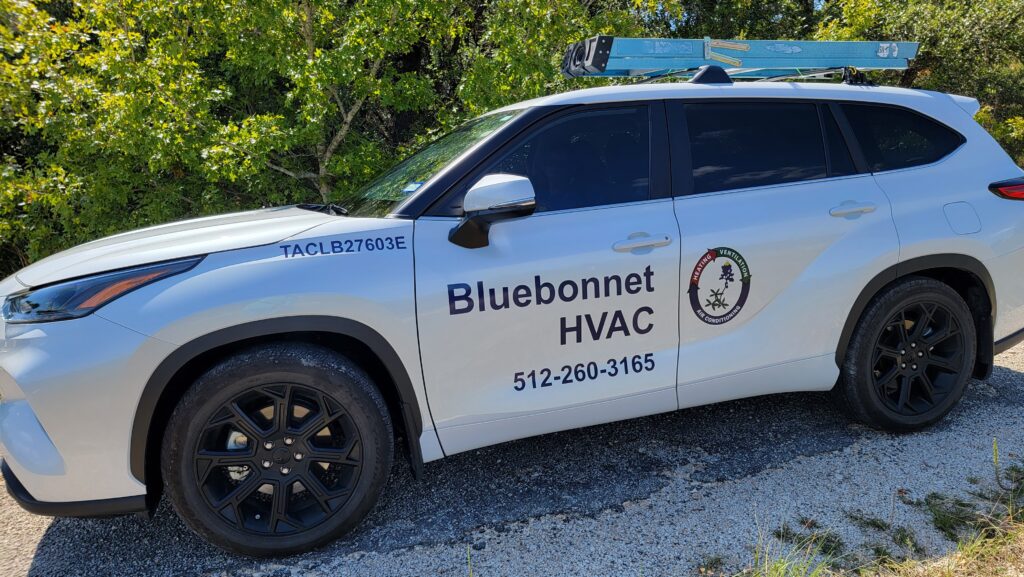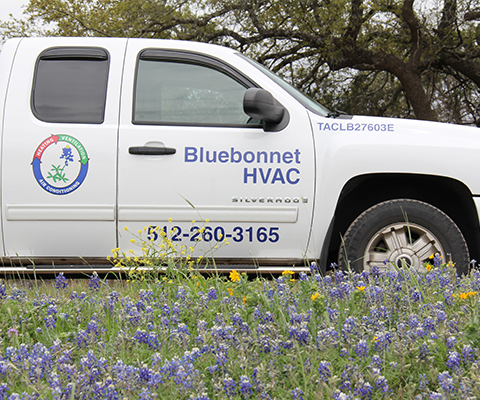


What is air conditioning?
Whole-home air conditioning systems are central systems that rely on ductwork to deliver cool air throughout your home. An air conditioning system can provide cooling, ventilation, humidity control and even heating (if using a heat pump). Typical air conditioning systems include heat pumps, evaporator coils, condensing coils, blower motors, fan motors, electronics, and controls.
How is my home heated?
Most central heating systems in Central Texas are forced air systems, which means they send air through ductwork for distribution. Typical heating systems include heat pumps, auxiliary heat strips, gas/electric furnaces, blower motors, fan motors, electronics, and controls.
How can I improve my Indoor Air Quality (IAQ)?
Pollutants make their way into homes every day. Some pollutants (e.g., dust, pollen, pet dander, mold, viruses, and bacteria) can be dangerous to your family’s health and/or aggravating to conditions like asthma and allergies. The air inside your home can be 2 to 5 times dirtier than the air outside, leading the Environmental Protection Agency to declare indoor air quality a top five environmental health concern.
We would be happy to discuss IAQ solutions like air purifiers, media-based air filters, electrostatic/ionization filtration, humidity control, ventilation, ultra-violet (UV) light disinfection, and catalytic processes to remove air contaminants.
What is the proper size HVAC system for my house?
The answer to this question requires more information than just the square footage of your house. Sizing a HVAC system also depends on the number of occupants, the insulation rating of your house, how well your house is sealed, the quality of your windows, and the solar gain in your location, among other things. We would be happy to discuss these factors with you and help you decide on the appropriately sized HVAC system(s) for your house.
When should I replace my HVAC system?
Only you can answer this question. You should base your decision on the reliability of your HVAC system, the ongoing cost of repairs, and your energy bills. Sometimes you can replace only part of your system, to spread out costs. We would be glad to discuss these factors with you and help you decide if it is time to replace your system or part of your system.
How can I help ensure my HVAC system is operating well?
To ensure your HVAC system operates well, you as a homeowner need to perform regular maintenance. This includes but is not limited to:
-Air filters should be changed at least as frequently as recommended by the manufacturer, but they may need to be changed more frequently based on your lifestyle.
-Ensuring your condensate drain lines do not clog. We recommend using hot water to flush the lines and using vinegar or bleach to inhibit biologic growth once a month. There are also tablets placed in the system pans that dissolve over time and inhibit biologic growth. You should also know where your drains empty and how to remove clogs with a wet/dry vacuum.
-The condenser should be hosed off any time it becomes excessively dirty (e.g., dirt or lawn clippings). The area around the condenser should be free of plants or any items that can block air flow on all four sides and above the unit.
What regular maintenance should my HVAC system receive?
In addition to the regular maintenance performed by homeowners, we recommend two seasonal check-ups per year. The Spring Check-Up will make sure your air conditioner is operating within normal parameters. The Fall Check-Up will make sure your heater is operating within normal parameters. What each check-up includes depends on the type of HVAC system you have. Contact us to schedule your next check-up.
Do I need my air ducts cleaned?
Unless your house has damaged duct work or was run without proper filters in place, the answer is most likely “NO”. If you suspect that your system would benefit from air duct cleaning, we can perform a visual inspection. Homeowners can remove supply grills and look at parts of the duct system, but we can use cameras to look deeper into your system. If mold is an issue, you should seek out a specialist in mold remediation.
What is a “zoned” HVAC system?
HVAC systems with zones use electronic dampers in the air ducts and multiple thermostats to control air flow to different areas of the house based on the temperatures of those areas.
What are EER, SEER, EER2/SEER2, AHRI, and Energy Star ratings?
Energy Efficiency Ratio (EER)
A room air conditioner's efficiency is measured by the EER. The EER is the ratio of the cooling capacity to the power input. The higher the EER rating, the more efficient the air conditioner. The government sets required minimum values for this based on location.
Seasonal Energy Efficiency Ratio (SEER)
SEER is a rating scale that measures an HVAC system’s energy efficiency. A SEER rating is a system’s cooling output divided by the energy it uses during the warmer part of the year. A higher SEER rating equals a more energy-efficient system. The government sets required minimum values for this based on location.
EER2 and SEER2
New testing procedures to better reflect field conditions of installed equipment. These have replaced the original EER and SEER values and requirements.
Air conditioning Heating and Refrigeration Institute (AHRI)
The AHRI has a voluntary Product Performance Certification Program. This is a voluntary program which ensures that various types of heating, ventilation, air conditioning, refrigeration, and water heating products perform according to manufacturer's published claims published claims. Products that are certified through the program are continuously tested, to determine the product’s ability to conform to one or more product rating standards or specifications.
Energy Star Rating
Earning the ENERGY STAR means products meet strict energy efficiency guidelines (EER2 and SEER2) set by the U.S. Environmental Protection Agency. By choosing ENERGY STAR certified heating and cooling equipment and taking steps to optimize its performance, you can enhance the comfort of your home while saving energy. Saving energy helps you save money on utility bills and protect our climate by helping prevent harmful carbon pollution and reducing other greenhouse gases.
